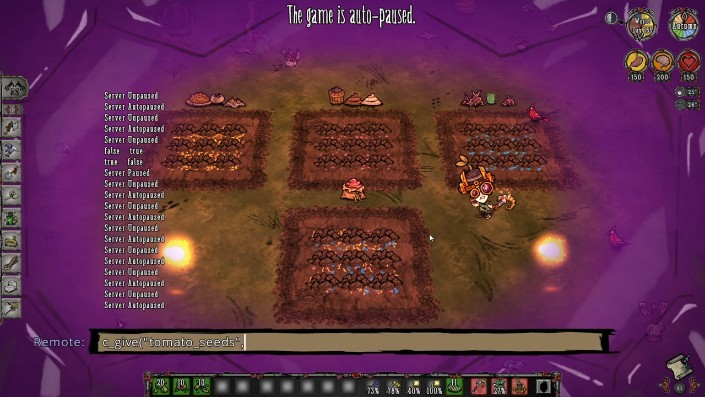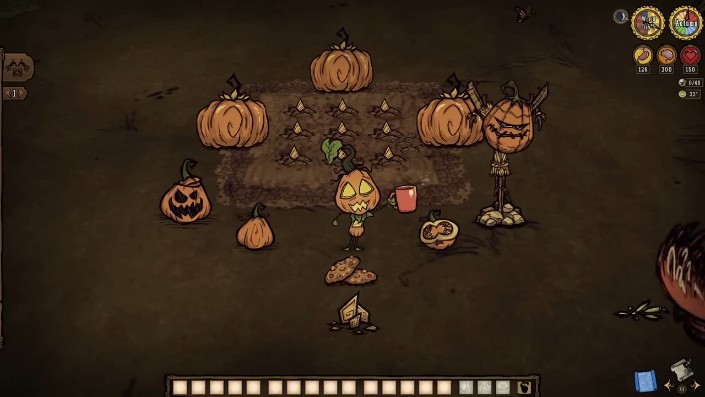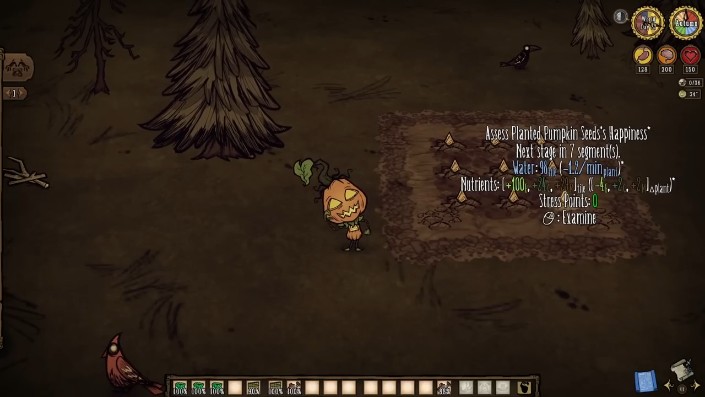Don't Starve Together (DST) is a survival game that challenges players to navigate harsh environments, manage resources, and craft essential items to stay alive. Among the various resources available, pumpkins are particularly valuable due to their high hunger value and versatility in crafting recipes. This article delves into the world of pumpkin farming in DST, exploring strategies for maximizing yields, understanding seasonal growth patterns, and utilizing pumpkins in recipes.
Understanding Pumpkin Basics
Hunger and Health Value
Pumpkins provide a significant amount of hunger and health when cooked. Here's a breakdown of their nutritional value:
| Item | Hunger | Health | Sanity | Spoil Time |
|---|---|---|---|---|
| Raw Pumpkin | 37.5 | 3 | 0 | 10 days |
| Hot Pumpkin | 37.5 | 8 | 0 | 6 days |
Seasonal Growth
Pumpkins grow best in Autumn and can also thrive in Winter if properly managed. They do not grow well in Summer due to the lack of rain and increased risk of farm fires.
Strategies for Maximizing Pumpkin Yields
Crop Combinations
To maximize pumpkin yields, it's crucial to choose the right crop combinations. Here are some effective strategies:
Pumpkin and Garlic: This combination is popular because garlic provides growth formula, which can help pumpkins grow into giant crops. However, to ensure garlic contributes nutrients, it needs sufficient compost.
Pumpkin and Pepper/Dragon Fruit: These combinations work well in Autumn. Replacing peppers with dragon fruits can also be effective, but dragon fruits have a lower growth rate.
Family Bonus: Planting at least four of the same crops near each other (about half a tile apart) can reduce stress and increase yields. However, this method requires a larger plot.
Nutrient Management
Crops in DST consume and produce nutrients. Understanding how to manage these nutrients is key to successful farming:
- Manure and Compost: These are essential for providing nutrients to crops. Manure is more potent but can be harder to obtain.
- Growth Formula: Produced by certain crops like garlic, it helps plants grow faster and larger.
Seasonal Farming Tips
- Autumn: Ideal for planting pumpkins. Use the rain to your advantage to minimize watering needs.
- Winter: Pumpkins can still grow, but ensure the soil is well-watered before the first snowfall.
Utilizing Pumpkins in Recipes
Pumpkins are versatile and can be used in several recipes to boost hunger, health, and sanity:
Pumpkin Cookies
- Ingredients: 1 Pumpkin, 2 Honey, and any filler item.
- Benefits: Restores 15 sanity.
Pumpkin Pie (Not available in DST, but a common misconception)
While pumpkin pie is not a recipe in DST, players often confuse it with other games. However, you can make similar dishes using pumpkins and other ingredients.
Dragon Pie
- Ingredients: 1 Dragon Fruit, 3 Twigs.
- Benefits: Provides 75 hunger, 40 health, and 5 sanity.

Examples of recipes that can be made with pumpkins, highlighting their versatility in cooking.
Case Study: Optimizing Pumpkin Farm Layouts
Let's consider a scenario where you want to maximize pumpkin yields in a small plot:
Scenario
You have a 1x1 plot and want to grow pumpkins efficiently. You decide to use a combination of pumpkins and garlic to leverage the growth formula produced by garlic.
Steps
- Prepare the Plot: Ensure the soil is well-fertilized with manure or compost.
- Plant Pumpkins and Garlic: Plant 4 pumpkins and 2 garlic plants to balance nutrient consumption and production.
- Maintain the Plot: Regularly water and tend to the crops. Use items like the One Man Band to efficiently manage multiple plants.

This layout demonstrates an efficient plot design for maximizing pumpkin yields using crop combinations.
Expected Outcome
With proper care, you can expect to harvest giant pumpkins, which provide more resources than regular ones. This setup also allows for efficient nutrient cycling, ensuring your garlic plants contribute to the growth of your pumpkins.
Conclusion and Additional Resources
Mastering pumpkin farming in DST requires understanding seasonal growth patterns, nutrient management, and effective crop combinations. By implementing these strategies, you can significantly improve your resource gathering and survival chances in the game.

Understanding nutrient management is key to successful farming; this image shows the role of manure and compost.